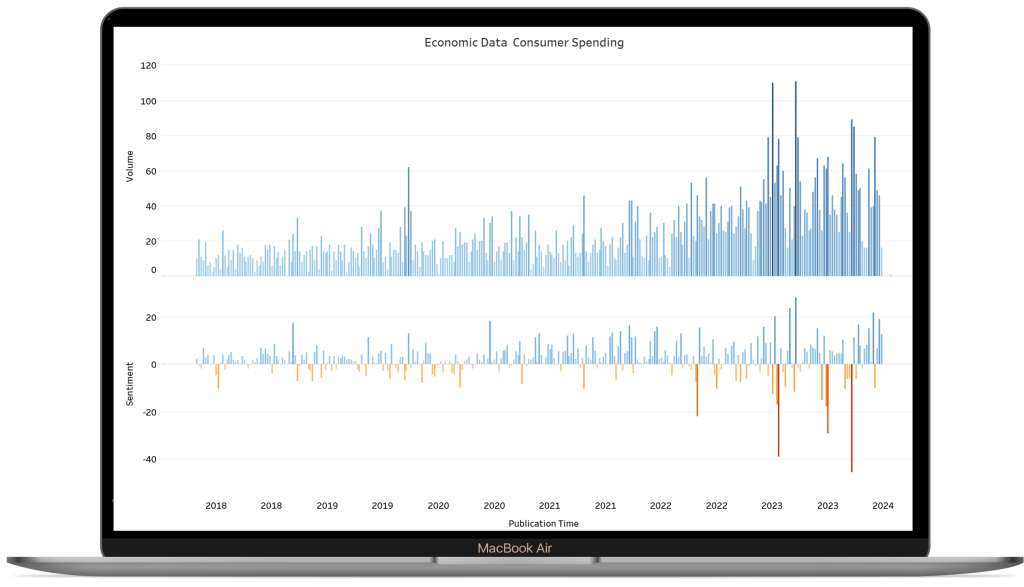Consumer spending trends have always been a key indicator of economic health and societal preferences. However, the year 2020 brought about unprecedented changes in consumer behaviour due to the COVID-19 pandemic. Here, we explore the evolution of consumer spending trends post-2020 era to 2024. Understanding these trends is crucial for businesses to adapt and thrive in the new normal.
The impact of the COVID-19 pandemic on consumer spending
The COVID-19 pandemic has had a profound impact on consumer spending habits. Lockdowns, social distancing measures, and economic uncertainties forced consumers to rethink their priorities and alter their spending patterns. In the initial stages of the pandemic, panic buying of essential goods was witnessed as consumers stocked up on supplies amid fears of shortages. However, as the situation stabilized, consumer spending shifted towards health and hygiene products, as well as home entertainment and exercise equipment.
The shift to online shopping and e-commerce
One of the most significant changes in consumer spending trends post-2020 is the rapid shift towards online shopping and e-commerce. With brick-and-mortar stores temporarily closing or operating under limited capacity, consumers turned to the convenience and safety of online shopping. This shift has not only impacted traditional retailers but has also created opportunities for businesses to establish or expand their online presence. The rise of contactless payments and doorstep deliveries has further accelerated the growth of e-commerce.
Changes in consumer preferences and priorities
Consumer preferences and priorities have undergone a transformation in the wake of the pandemic. Health and safety have become top priorities for consumers, leading to increased demand for products and services that promote well-being. Organic and sustainable products, as well as home-based fitness solutions, have witnessed a surge in popularity. Additionally, consumers have become more conscious of supporting local businesses and brands that align with their values. As a result, businesses need to adapt their offerings to cater to these changing preferences.

Above: Permutable AI’s consumer spending dataset
Predictions for consumer spending
Looking ahead, several predictions can be made for consumer spending. Firstly, the shift towards online shopping and e-commerce is expected to continue, even as physical stores reopen. Consumers have become accustomed to the convenience and wider product selection offered by online platforms. Secondly, there will likely be a sustained focus on health and wellness, with increased spending on products and services related to personal well-being. Finally, consumers are likely to prioritize experiences over material possessions, leading to increased spending on travel, dining out, and entertainment.
The role of technology in shaping consumer spending trends
Technology plays a pivotal role in shaping consumer spending trends. From personalized marketing campaigns to AI-powered chatbots, businesses are leveraging technology to understand consumer needs and provide tailored experiences. The use of data analytics and artificial intelligence enables businesses to gain insights into consumer behaviour and make informed decisions. Additionally, emerging technologies such as virtual reality and augmented reality have the potential to revolutionize the way consumers shop and interact with brands.
Strategies for businesses to adapt to the new normal
To adapt to the new normal, businesses need to embrace certain strategies. Firstly, they must invest in their online presence and optimize the user experience of their websites and mobile apps. This includes ensuring fast loading times, intuitive navigation, and secure payment options. Secondly, businesses should focus on building trust and transparency with consumers by clearly communicating safety measures and social responsibility initiatives. Lastly, businesses need to be agile and responsive to changing consumer preferences, constantly innovating their products and services to meet evolving needs.
Case studies of successful businesses that have embraced the new consumer spending trends
Several businesses have successfully adapted to the new consumer spending trends including:
Amazon: Amazon‘s e-commerce platform remains one of the most popular online marketplaces, with a vast selection of products and fast shipping options. Its Prime membership program, which offers benefits such as free two-day shipping and streaming services, continues to attract millions of subscribers.
Netflix: As a leading streaming service, Netflix continues to dominate the entertainment industry with its extensive library of movies, TV shows, and original content. Its subscription-based model and personalized recommendations keep users engaged and coming back for more.
Walmart: As one of the largest retailers in the world, Walmart has successfully adapted to changing consumer preferences by expanding its omnichannel offerings and investing in e-commerce capabilities. Its online grocery pickup and delivery services, along with initiatives like Walmart+, cater to the evolving needs of today’s shoppers.
Boohoo: Despite facing controversies related to labour practices and sustainability, Boohoo remains a prominent player in the UK’s online fashion retail sector. Its affordable clothing lines and frequent product launches appeal to budget-conscious shoppers looking for trendy styles and fast turnaround times. Boohoo’s strong digital presence and social media marketing strategies have helped it maintain its popularity among young consumers.
Tesco: The leading UK supermarket chain, has successfully navigated the shifting consumer landscape post-COVID-19 by adapting its strategies to meet evolving consumer needs. Embracing the surge in online shopping, Tesco expanded its online grocery services, offering home delivery and Click & Collect options, while also increasing delivery slot availability to accommodate high demand and diversifying its product offerings to include essential items and health-related products, aligning with changing consumer priorities.
Apple: The global technology giant has adapted to new consumer spending trends by leveraging its digital ecosystem and emphasizing product innovation. With the acceleration of remote work and digital connectivity, Apple capitalized on the increased demand for its devices, including iPhones, iPads, and MacBooks, which became essential tools for remote communication and productivity. The company also focused on enhancing its online retail experience, offering convenient purchasing options and virtual customer support.
The importance of consumer spending intelligence as a barometer
Understanding consumer spending trends is essential for businesses to gauge market demand, anticipate changes, and tailor their strategies accordingly. Consumer spending intelligence serves as a barometer of economic health and societal preferences, providing valuable insights into consumer behaviour and market dynamics. By analyzing consumer spending patterns, businesses can identify emerging trends, assess competitive threats, and capitalize on new opportunities. Ultimately, consumer spending intelligence empowers businesses to make informed decisions and stay ahead in today’s rapidly evolving marketplace.
Embracing the evolution of consumer spending trends
The COVID-19 pandemic brought about significant changes in consumer spending trends – the effects of which can still be keenly felt today. The shift towards online shopping, changes in consumer preferences, and the role of technology have reshaped the way businesses operate. To thrive in the new normal, businesses must adapt their strategies and offerings to cater to these evolving trends. By embracing technology, analyzing consumer data, and prioritizing safety and well-being, businesses can position themselves for success in the post-2020 era. It is essential for businesses to stay agile and responsive to consumer needs and embrace the evolution of consumer spending trends to secure their place in the future.
Navigating consumer spending trends with Permutable AI’s economic data intelligence
Unlock the power of economic data intelligence with Permutable AI’s comprehensive data feeds offering insights into consumer spending trends from 2018 to the present. Our data intelligence provides in-depth insights into the dynamics behind consumer spending patterns worldwide, enabling you to stay ahead of the curve. By staying informed about shifts in consumer preferences, economic drivers, and sentiment analysis, businesses can make data-driven decisions to foster growth and success in an ever-evolving marketplace.
